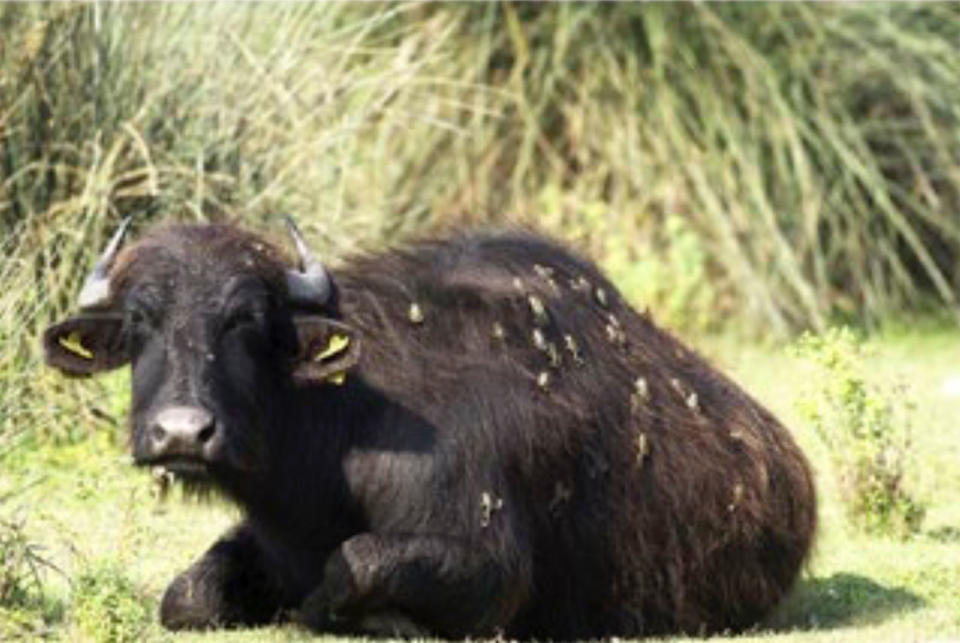Why Are These Water Buffaloes Covered with Tiny Frogs?
Water buffaloes wallowing in the wetlands of northern Turkey are carrying some unlikely passengers on their backs — tiny frogs.
Researchers spotted the buffalo-riding amphibians — marsh frogs Pelophylax ridibundus — in the Kizilirmak Delta along the coast of the Black Sea, a region with freshwater and brackish lakes, and plentiful marsh vegetation alongside farmlands and pastures.
From April to November, domesticated Anatolian water buffaloes (Bubalus bubalis) are released from their pastures to roam the marshes. And when they do, they collect frog hitchhikers, which forage on the buffaloes' shaggy bodies for flies. Birds are known to play a similar role with some types of mammals, but this is the first study to describe this type of mutually beneficial relationship between large mammals and amphibians, the scientists wrote. [Daring Duos: Photos Reveal Unlikely Animal Friends]
In the natural world, there are many examples of the strategy known as mutualism — when two species interact for their mutual benefit. In Borneo, small mammals called tree shrews lick nutritious nectar from a carnivorous pitcher plant, which they in turn nourish by depositing their poop inside its insect-snaring pitcher trap. Cuckoo chicks "reward" the hardworking species they trick into fostering them by secreting a substance that repels predators. And many bird species — such as the oxpecker — survive on insects and parasites that they pick from the fur of their mammalian hosts.
But prior to this study, there was little evidence that amphibians could share a mutualistic relationship with big mammals, the scientists reported.
The study authors observed the buffaloes on 12 occasions over seven days in October 2012, and recorded 10 instances of individual buffaloes that were festooned with frogs, most of which were actively foraging. Some frog-carrying buffaloes were standing and some were lying down, and the frogs were gobbling flies from positions across the big animals' backs, with some even squatting on the buffaloes' heads.

Fly catching appeared to be the frogs' primary reason for taking up temporary residence on the buffaloes' backs. But it's also possible that the small amphibians benefited from the body heat of the large mammals, which likely warmed the frogs when air temperatures were cooler, according to the study.
As many as seven buffaloes at a time hosted fly-eating frogs on their backs, the scientists noted. One buffalo carried a total of 27 frogs and another carried 19 frogs — though the average number of frogs per buffalo was typically between two and five — and the frogs foraged "in a similar manner as birds on large mammals," the study authors reported.
Additional observations the following year confirmed that the frogs only exhibited this behavior in the fall, perhaps because their population density was higher during this time of the year, leading to greater competition for food, the scientists suggested in the study.
The findings were published in the June 2017 issue of the open-access journal Acta Herpetologica.
Original article on Live Science.


